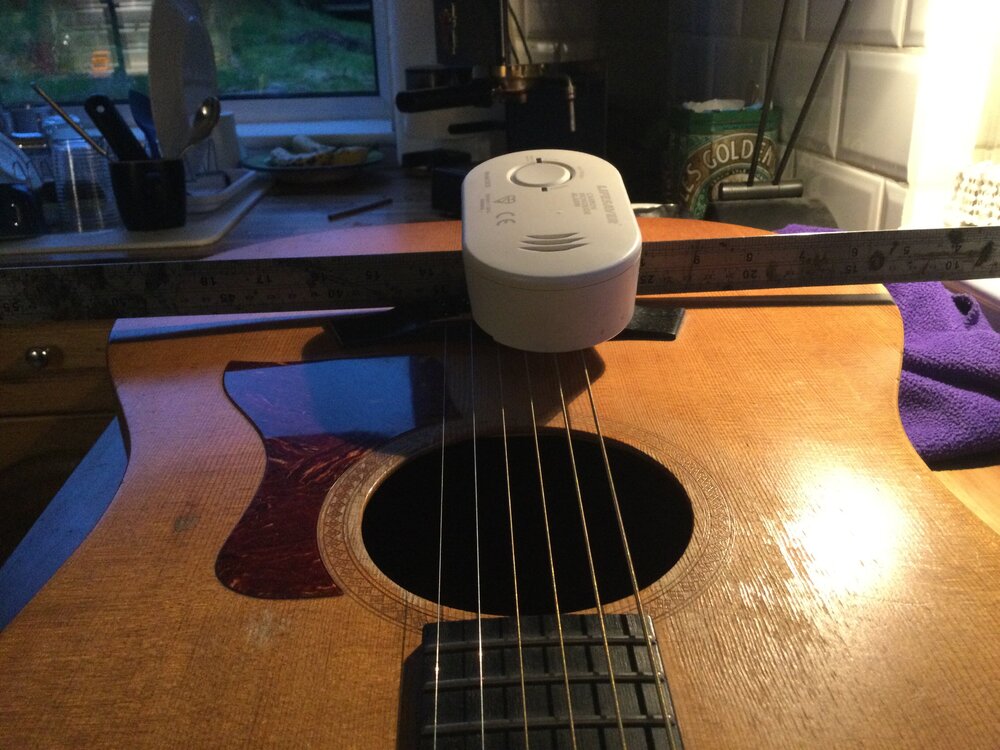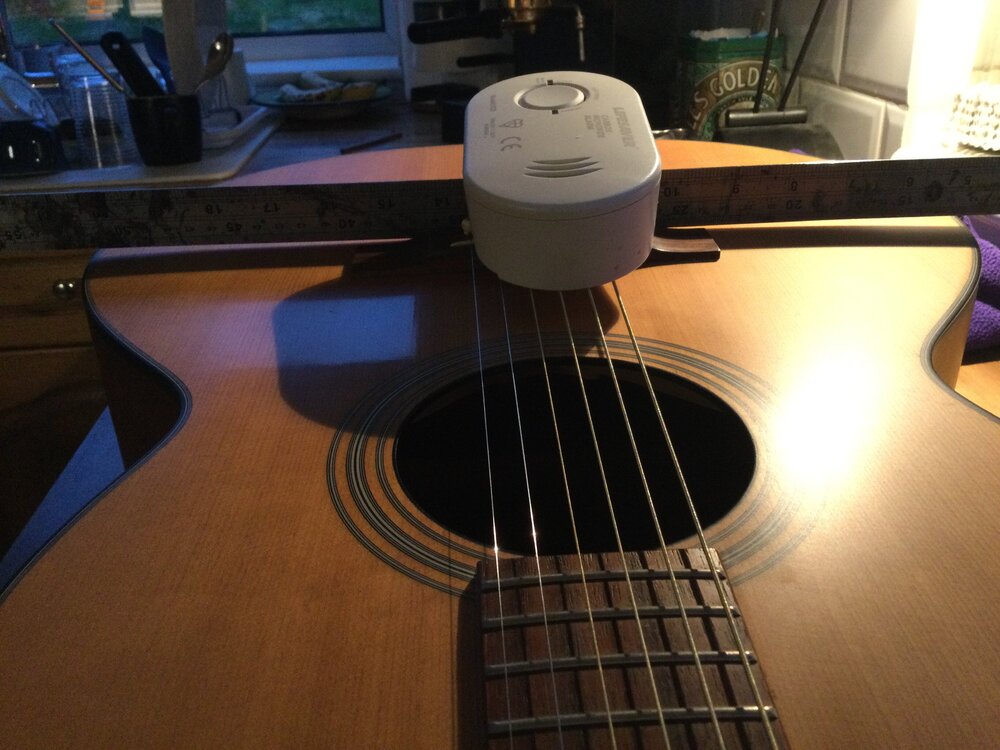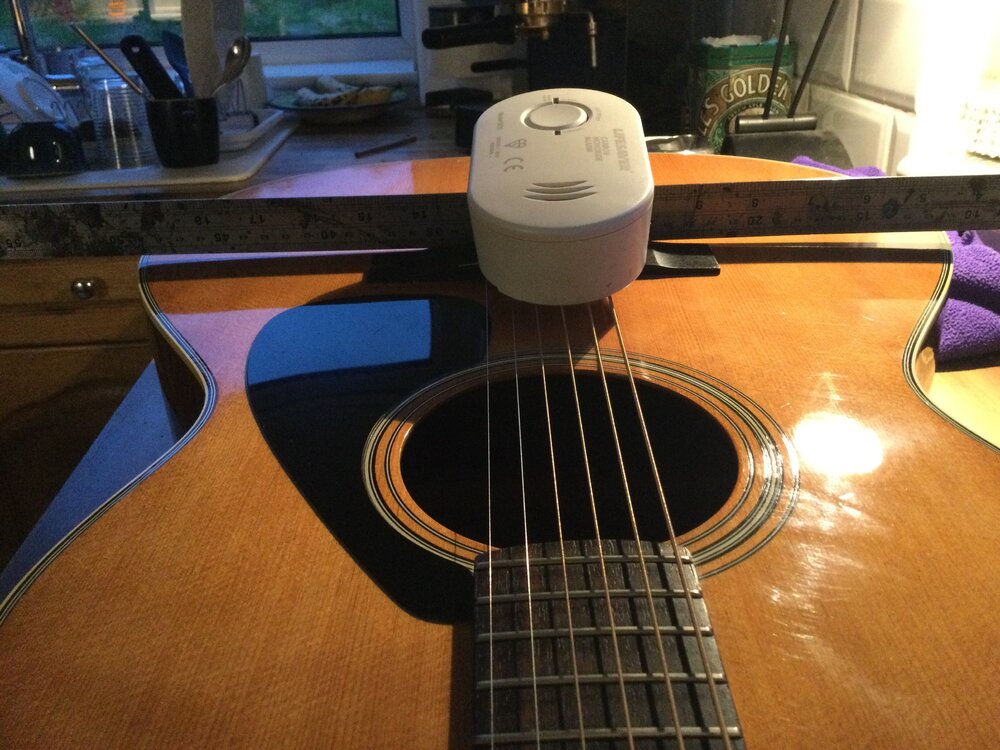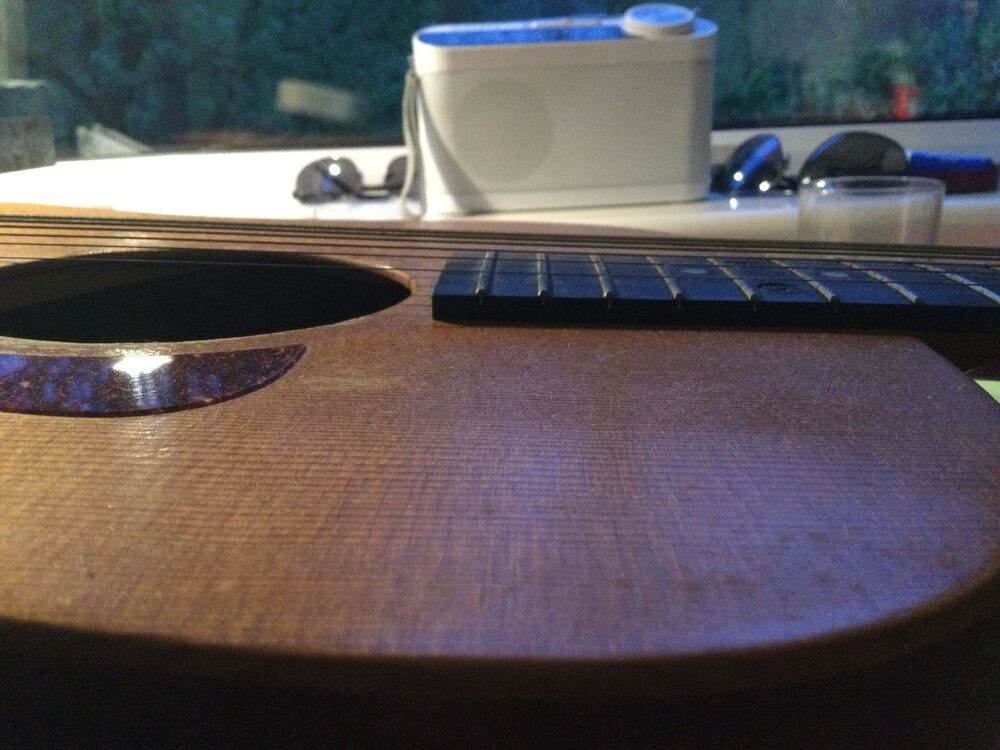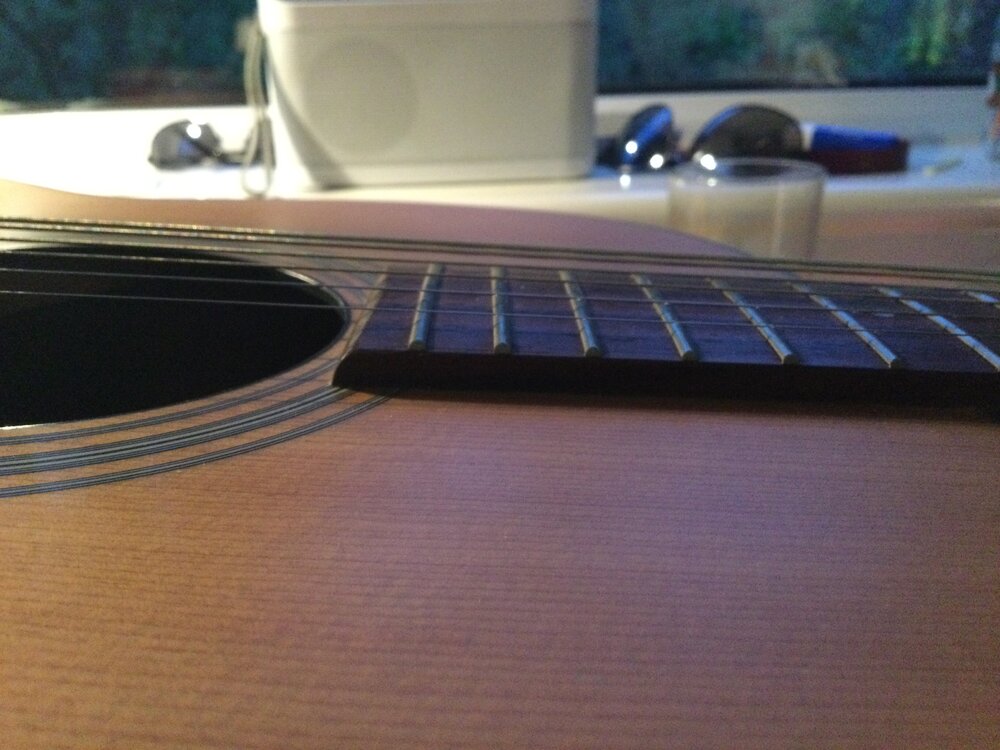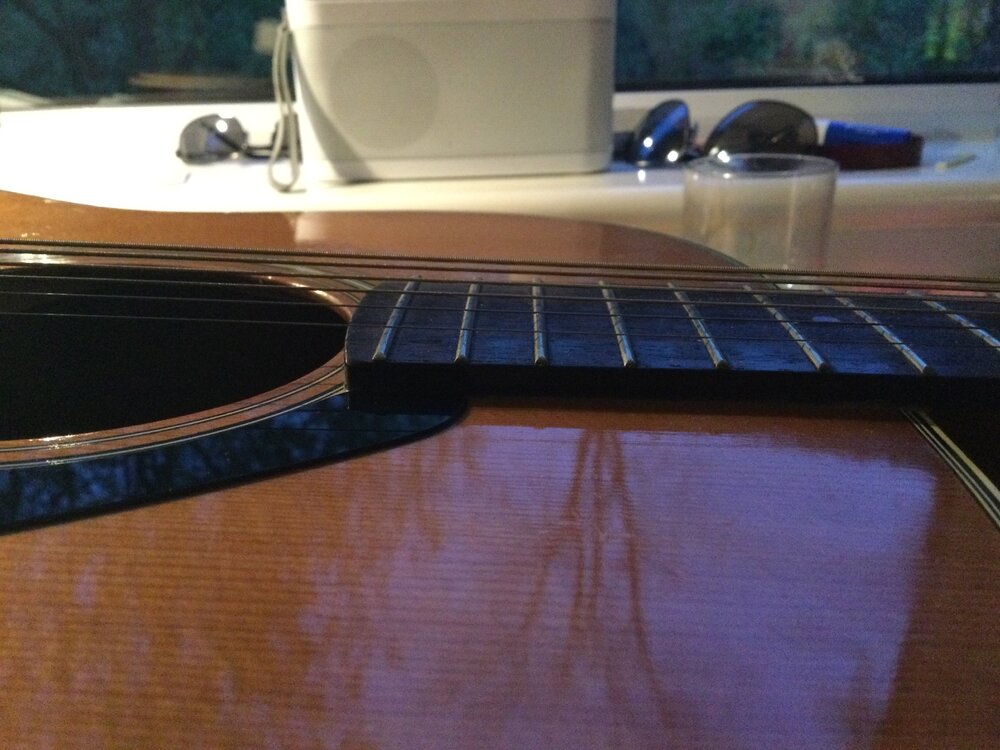
Sea Chief
Members-
Posts
13 -
Joined
-
Last visited
Recent Profile Visitors
The recent visitors block is disabled and is not being shown to other users.
Sea Chief's Achievements
-
Hi well I'm not sure though ( & this is the core point) that any of these humps, are due to the string tension. The reason I take this view, is the takamine eg. The hump was there when new. I can't see the small ammount of time its been in a warehouse since being constructed in china, as time enough for this hump to form. And if it is a result of string tension ( I can see the logic if this pov, but there's nothing in practise to back this up)... this implies that takamine would need firstly to build a bridge say 1cm lower than it is now, add the strings, then watch it rise to its current position. And then when strings removed, this hump remains newly formed. Apologies, but this seems absurd. I can see no other plausibility, than takamine made this hump, & it has remained exactly so as when made. Therefore, as I see an almost identical hump on my taylor, & I have noticed no undue string action heightening, I must think that taylor too made this hump. If my yamaha shows another hump, almost as identical, it's only logical to think yamaha too, made this hump. Can you see how I can only come to this conclusion, & no other theory is plausible now? ( It seems not, & you disagree). Thanks, SC
-
Sea Chief started following Hi y'all , Best Youtube thing y'all. and Acoustic 'luthier' Q's.
-
This is what Alan Turing & all the boffins, over decades have achieved, just for us. A youtube vid, with cat. I thank you. SC
-
I need stupidity. Its the only way I can cope. I shall do a stupid thread to compensate for my thread spiel & utterly confounded noggin. SC
-
I've just photo'd all 3 of my acoustics. That there is such a remarkably similar 1cm ( each side.. so let's indeed call it a 1/2" curve) guitar top to guitar top, & stating that the saddles certainly on the Taylor (1), and takamine (2), are unadulterated originals as I know them to be (cant vouch for the Yamaha's, no. 3), & finally without anythingnother than "normal string action" as you can hopefully see in the last three oics, to see such a remarkably similar top curve on all three cannot be coincidentally that they all, have the exact same "faulty uplift", being so different in age, quality, & top material (the taylor being a solid top). It just cannot be coincidence. Therefore, I have to conclude, & even if there is disagreement, that this 1/2" upward top curve IS a design feature of acoustics. Or at the least if not on every acoustic, certainly certainly certainly & this just HAS to be true, of the ones I happen to have right here. Each photo has my straight edge ruler as perpendicular to the bridge as I can, no bendings please thank you. SC
-
Hi dad3353. Ok consider this, if you would. My takamine gs220 was new 18 or so years old. Lighty used. Maybe only 4 times I've put on a new set of strings. Standard medium guage. The strings' action when new was really good. The intonation too. The relief too. The only guitar I've had I've not needed to tweak, at all. Playability? Excellent. Such a good player, well designed, well made. Only the finish & the ply top let the side down... but for £120 it is a belter. The strings' action now, remains identical to when new. Not an iota of change. I mean at the 12th fret, & I have a fairly keen eye for detail & would notice any change in this action height over this time. There has been no change. Ok so far so good. Now, when I look across, I see this (let's call it a 1cm) curve. It is noticeable, it can be measured, even the bridge slightly follows this curve too. I noticed it when new, just as I notice it now. No change. Quite obviously if there -had- been any uplift / any change to this situation, I would notice it simply by a raising of the strings' action: as the sction remains identical to when new, I can safely state with total conviction, that the bridge is in the same position as when new, that it has not changed in height. But the curve is there. As it was when new. As it remains when strings are changed ( IE the string tension, even knowing this to be a significant ~75lbs on acoustics, still is not affecting the bridge height... so this factor is NOT the cause of the curve). As my Taylor has a remarkably similar curve. As my yamaha does too. But you say if there is a curve, then it is a fault/ it is a result of over time, the string tension pulling up the top. But as my takamine eg shows, there simply is no fault. Bought from a ' warehouse ' uk store, Andertons or similar, sothe chance of this being failty with a 1cm curve when new, are absolutely non-existant. Can you see what I mean now? Thanks, SC
-
Hi dad3353. thanks. I understand all this, but what I don't understand is every acoustic Ive had, & two bought from new, have shown me this subtle curve. As all are exactly he same, including ones decades old, although what you say makes sense, it's not what I see. None have had their string action increace over time too. Hence my only possible, & only plausible conclusion being, that this subtle curve is simply meant to be there. For an acoustic property pov I mean, not, as a result of string tension. When yiu pick up an acoustic one might assume the back is flat, but it's not, & one can safely assume this outward curve has something todo with acoustic properties. But a classical doesn't have this. It's back is flat. And it's top I just know from experience playing, is also flat. My reasoning would be an acoustic with steel strings, maybe to aid volume, or, to aid the rounding of it's tone, need this curve it's back. I'm just going along the same avenue, & saying the same principle applies to the top albeit not as pronounced/ obvious: from what I find consistantly, from all new & old acoustics I've had, over 37 years. But you're effectively saying no, I'm wrong. You might be correct. But I just cannot see how from the evidence in front of my enormous nose... & I am totally baffled by this. Thanks, SC
-
It might be as subtle as a 1/4" curve. But you see I am adamant this is there, designed, not easy to spot ( one might think it's totally flat... & it is flat at the neck join part of the top: but not at the bridge). So in effect you are saying B), & I'm saying this can't be on acoustics (& following logic, & assuming all three of mine are not coincidentally precisely faulty by precisely the same ammount) & so I say it has to be A). --- Classical guitars... now here I believe it's different: here the top -IS- flat across the whole top, in the design. I believe, like your useful archtop example, there is an arch to the tops of acoustics.... but it is very very subtle.... but the nature of this arch is critical to the string height/ action. Critical. And this is why I'm pinpointing it. This is my view, but ideally it needs a luthier to concur or not, because to the average player, it just looks dead flat, so the assumption is it is dead flat. I'm not suggesting kiwi is an average player, no. Thanks, SC
-
Hi thanks. I do understand the difference between archtops, & acoustics. This is a very obvious top curve ( looking sideways across it's top: easy to see). This isn't what I'm referringto, although an archtop is best eg of - where- precisely Im talking about, the very " arch ". Or not as the case may be. What I'm trying to establish, is much more subtle than this. A much shallower hump on an acoustic. Possibly.. or not. You see when I take strings off, all three of my acoustics, a takamine 2001 gs ( china), a taylor '05 ( usa), & a yamaha '79 ( taiwan), all three show me a very subltle -but remarkably similar- upward curve to the top. Its maybe as small as 1/2" over the whole top. And at it's peak let's call it ( its highest part) sits the saddle. An archtop let's call it gives a 1-1/2" arch, or hump. A clear design feature here. Why an arch? Well I might suggest it specifically aids the acoustical sound within the chamber. If I see this subtle 1/2" hump, consistant with all 3 very different acoustics ( in mfr location, & age) of mine, when the strings removed... it is either A) or B). Logic simply shouts ( to me) the following.. A) Like an archtop, but far far more subtle... this upward curve has to be a fundamental design factor of acoustics. B) This curve is not a design factor, but added by string tension ( known to be alot 75lbs or so ) pulling the bridge up. Im maddeningly you see between A) and B). I say it just has to be A).. why? Because of a few reasons, again this is conjecture but is based on 37 years of playing, & simple rational reasoning. IF this 1/2" hump is caused by string tension alone, then one would expect it to diminish when strings removed: but it doesn't: the hump stays --exactly-- the same. And furthermore, how could a mfr build any acoustic like this too anyway: it would be an inconsistant guessing game from one gtr to the next once a set of strings put on: it doesn't make sense. To me, the only thing that makes sense, is this curve is fundamentally in the design, & only changes ( rises) if the guitar develops a fault: a typical symptom of poor older acoustics, that being a raised bridge: often the bridge actually tilts but Im not talking about such a situation per se. SC
-
Well no I dont think so. But it could -bee- that i had actually shrunk during these bumble incursions, & the bees were in fact normally sized. SC
-
Good lookin bee that one. Ive had 3 in my house recently, unusually fkn enormous. Seriously- like genetically modified or summat. SC
-
Good stuff thanks chaps. I hope for some stupidity on here tbh. I like the crap caravan. Too many forums are oh so serious with empowered mods. I want abject daftness. NOW. SC
-
Hi, my first topic. Does anyone have any luthier knowledge on here? basics really, nothing taxing. I'm needing to know about tops ( IE the sound hole 'board' often solid spruce for eg) and their general profile shape, that is looking across, so strings on the same plane. Am I correct in saying classicals' tops are dead flat? And acoustic tops have a slight gradual upward hump? Would this generalisation be true? So looking across, as if checking the strings action at either low E or top E. I'm talking about looking across the guitar top from this perspective. Thanks, I'll stick there for now & explain why I ask the Q once I find an answer. Specifically it's the profile/ shape of the steel string typical acoustic top, rather than the classical nylon string guitar's top I'm needing info on. Thanks, SC
-
Hi folks on here. My name is Sea Chief, with 37 years playing behind me, but many techy basics seem to have passed me by. Laziness is the main reason. A healthy 'artistic disinterest' admittedly being another! I tend to spiel a bit to get my point across, so apologies in advance. I make guitar cabinets in fact, for handwired amp makers in UK, so I have a direct connection to the guitar industry here. Thanks, SC

